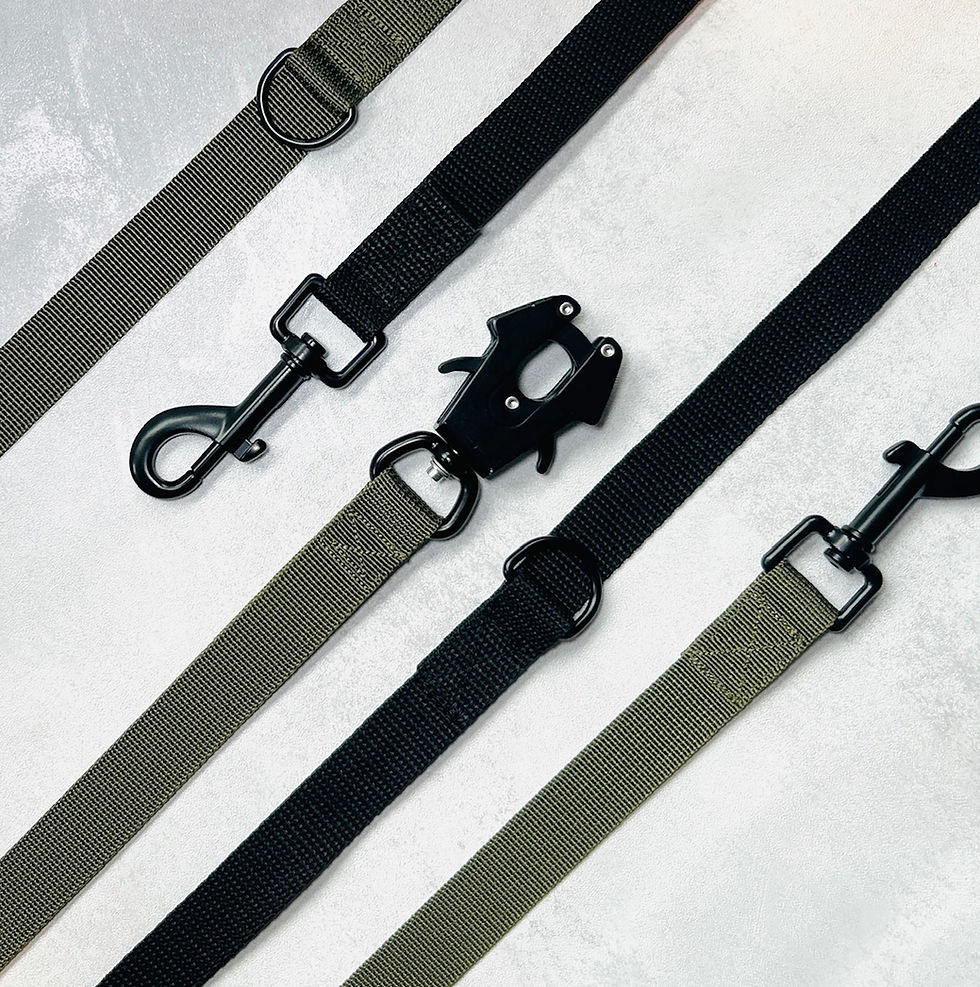Understanding Dogs’ Emotional Problems: Support, Respect, and Shifting the Narrative
- Cat Hamilton

- Apr 29
- 3 min read
For far too long, dogs have been viewed through a lens of utility or entertainment—expected to be obedient, cheerful, and always ready to be petted or played with on demand. But dogs are not toys, nor blank slates waiting to be moulded. They are emotionally complex beings, each with a history, temperament, and individual way of processing the world.
Dogs Feel Deeply
Just like humans, dogs can experience:
Fear and anxiety
Grief and loss
Loneliness and overwhelm
Frustration or confusion
Hyper-vigilance or shutdown responses (especially in traumatised or rescued dogs)
These emotional states can affect how they behave; sometimes in ways we find difficult or inconvenient. But what looks like aggression, aloofness, or disobedience may actually be a dog’s best attempt at feeling safe in a world that doesn’t always understand them.
Common Ways Emotional Problems Appear -
Barking is not “bad behaviour”; it is communication and it can be alerting to us that they are afraid, overstimulated, or asking for help.
Growling or snapping might be a clear boundary: “I’m scared” or “That’s too much for me right now.” Stay at a safe distance and do not probe a dog that is growling. They are giving you fair warning that they are not happy.
Avoidance or shutting down could be a sign of deep emotional overwhelm, not stubbornness.
Clinginess or separation issues often come from abandonment or insecure attachment.
Hyperactivity may be masking inner distress or an inability to regulate itself. Don’t just assume that it is just “excitement.”
We can’t truly help dogs unless we learn to see the emotion underneath the behaviour.
Supporting a dog with emotional challenges starts by letting go of outdated
assumptions, and finding a new way of relating. Compassion Over Control
Outdated Assumptions can be -“
All dogs love people and want to play.
Dogs just need training to behave.
If a dog is there then I can stroke it.
Instead, we shift to an approach based on attunement, empathy, and consent.
That means:
Ask before interacting.
Not all dogs want to be touched; especially by strangers. Let them come to you if and when they’re ready.
Observe body language.
Learn the subtle signs of stress, tension, or discomfort; tight mouths, tucked tails, yawning, avoidance. Respect what you see.
Let them choose.
Choice is empowering. Offer space to move away, time to settle, and permission to say “no."
Support over solve.
Instead of trying to fix behaviours, offer the dog what they need to feel safe: calm presence, predictable routines, and gentle guidance.
My approach is rooted in mindfulness and trauma-awareness. I tune in, slow down, and focus on creating emotional safety. Dogs that have been abused or neglected often carry invisible scars; they don’t need quick fixes or commands. They need to feel safe with you.
That comes through:
Regulated energy
Gentle, consistent routines
Honouring boundaries
Giving time to decompress and rebuild trust
We must move away from the idea that dogs are for us. They are not here for our entertainment or as emotional service animals for every human who wants a cuddle. They are sentient companions with their own needs, preferences, and boundaries.
The deepest relationships come from mutual respect, not expectation.
When we stop assuming dogs “should” behave a certain way and instead listen with curiosity and compassion, we build the kind of connection that heals; for both of us.
If you’ve welcomed or plan to welcome a rescue or emotionally sensitive dog into your life, remember this: you are not here to “fix” them. You are here to walk alongside them, patiently, lovingly, and with an open heart. Their healing won’t happen overnight; but every mindful moment matters.
I can support you on this journey through Coaching, Monthly Circles and a Membership Group. You are not going through this alone, and I would love to be your guide.











Comments